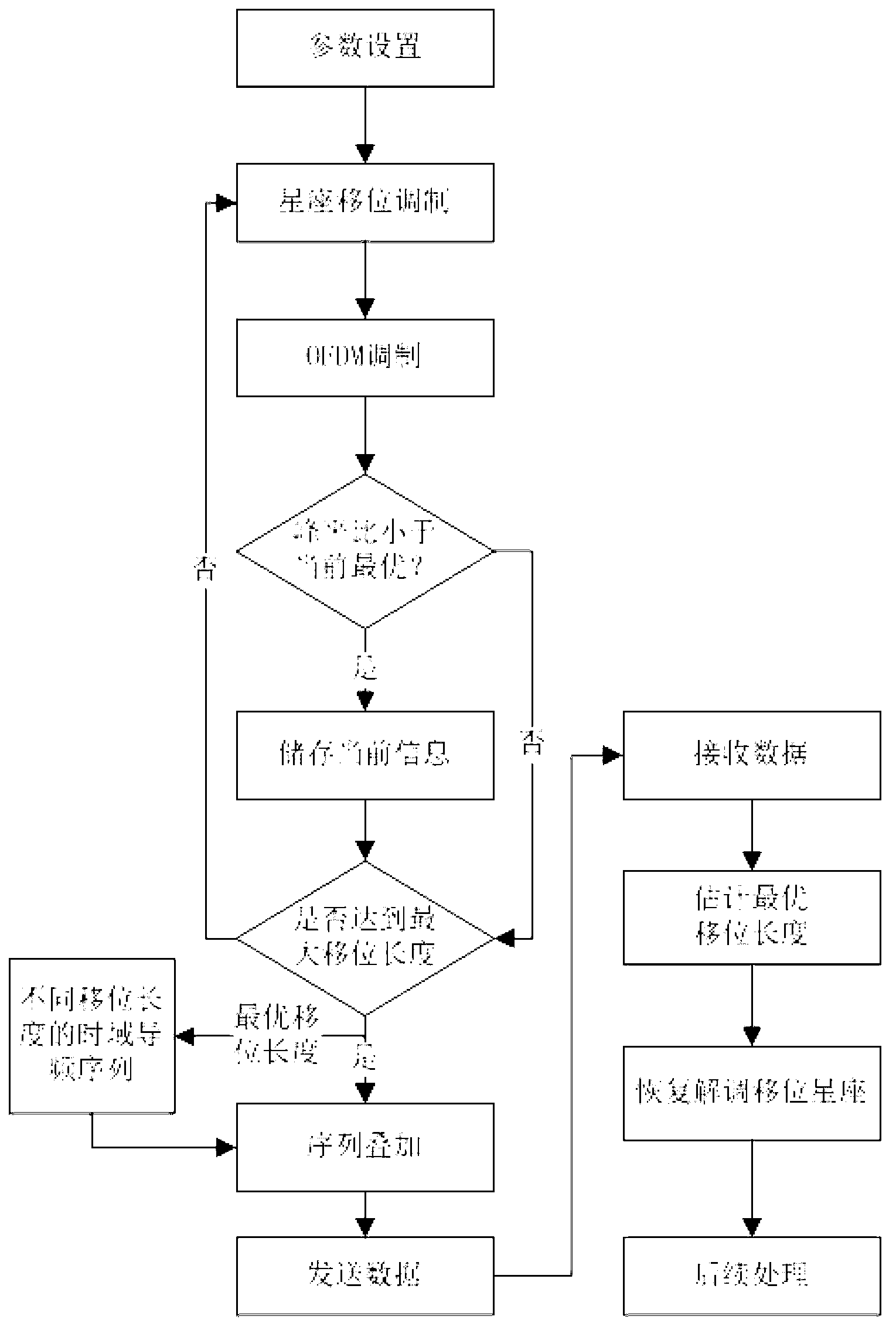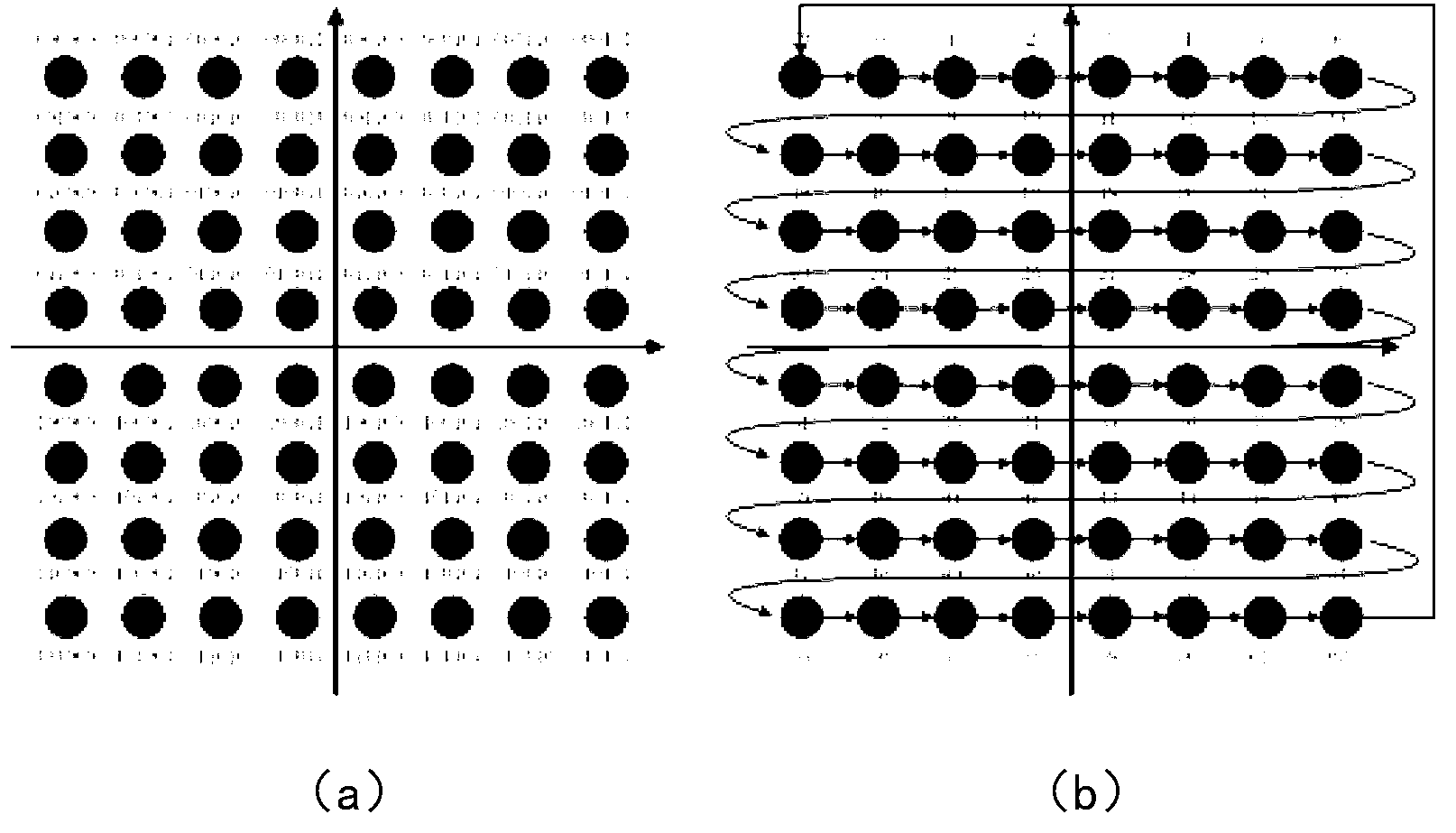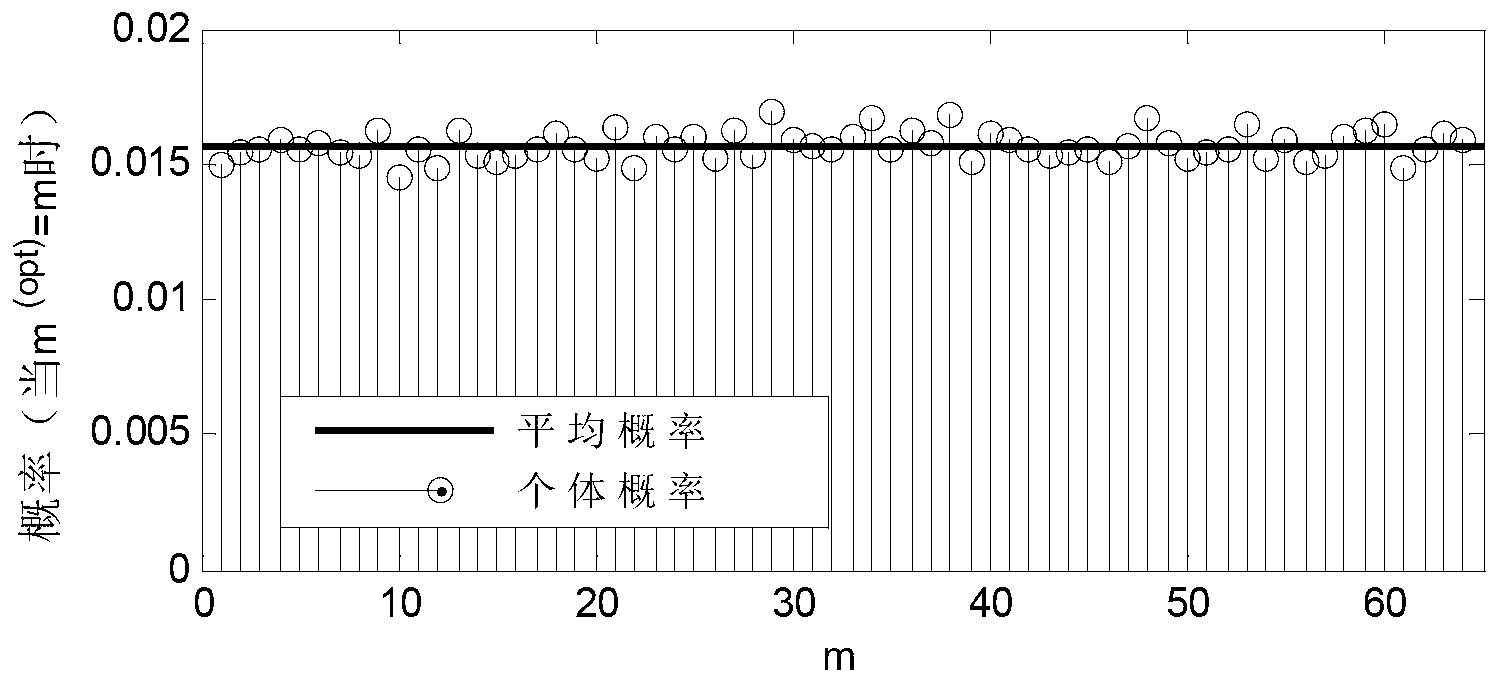Peak-to-average power ratio suppression method based on cyclic constellation shift
A cyclic constellation shift and peak-to-average ratio suppression technology, applied in multi-frequency code systems and other directions, can solve the problems of reducing information transmission rate, reducing peak-to-average ratio, and high complexity, improving non-correlation and reducing complexity. , the effect of reducing complexity
- Summary
- Abstract
- Description
- Claims
- Application Information
AI Technical Summary
Problems solved by technology
Method used
Image
Examples
Embodiment Construction
[0030] The present invention will be further described below in conjunction with the accompanying drawings.
[0031] Such as figure 1 As shown, the present invention is a peak-to-average ratio suppression method based on cyclic constellation shift, and the method includes the following steps:
[0032] Step 1, parameter setting steps
[0033] (1a) Set the initial M-order quadrature amplitude modulation constellation;
[0034] It should be noted that, taking 64QAM as an example, according to figure 2 The way shown in a initializes the quadrature amplitude modulation.
[0035] Further, if it is 16QAM, 128QAM or 256QAM, also use figure 2 Initialize in the same sequence as shown in a.
[0036] (1b) Set the maximum constellation shift length V, V is less than or equal to the modulation order M;
[0037] It should be noted that, if image 3 As shown, since the correlation between each transformation is low, the total length of the shift is equal to reducing the probability o...
PUM
 Login to View More
Login to View More Abstract
Description
Claims
Application Information
 Login to View More
Login to View More - R&D
- Intellectual Property
- Life Sciences
- Materials
- Tech Scout
- Unparalleled Data Quality
- Higher Quality Content
- 60% Fewer Hallucinations
Browse by: Latest US Patents, China's latest patents, Technical Efficacy Thesaurus, Application Domain, Technology Topic, Popular Technical Reports.
© 2025 PatSnap. All rights reserved.Legal|Privacy policy|Modern Slavery Act Transparency Statement|Sitemap|About US| Contact US: help@patsnap.com



